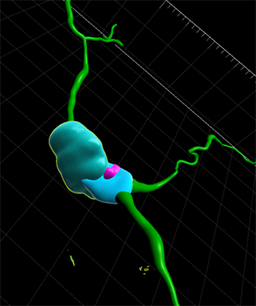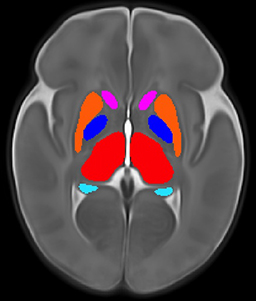Research Projects | Overview
We leverage spatial biology and neuroimmunology, in combination with machine learning and advanced computational neuroscience, to address research questions focused on fetal and neonatal neurodevelopment.
Impact of intrauterine and early life on neurodevelopment
How do adverse exposures during pregnancy and in early life affect brain development? Specifically, we seek to understand how inflammation, nutrition, and stress alter the molecular underpinnings of neurodevelopment, using both mouse models and human brain tissue. This includes analysis of the interactions between the neuroimmune system and neural stem cells during cortical patterning.

Neurobiology of Down syndrome
Down syndrome is the most common chromosomal cause of intellectual disability. During fetal life, the brains of people with Down syndrome show a marked reduction in neural precursor cell proliferation, differentiation, and migration. However, we have a limited understanding of how the abnormal genomic landscape in Down syndrome disrupts specific neurodevelopmental processes in utero, leading to cortical dysmaturation, hypocellularity, and white matter abnormalities. To study these molecular underpinnings, we use highly multiplexed RNA imaging, as well as human brain tissue and induced pluripotent stem cells.

Adaptation of the maternal brain to pregnancy
The maternal brain gains extraordinary plasticity during and after pregnancy. What are the determinants of this physiologic transformation? How does stress perturb maternal plasticity and predispose women to postpartum neuropsychiatric disorders? We are particularly interested in changes to the neuroimmune landscape during and after pregnancy.
Regulation of proteostasis and mRNA translation in the brain
The control of protein production, trafficking, and destruction are fundamental to cell health. Disruption in protein homeostasis is a hallmark of neurodevelopmental and neurodegenerative diseases. Therefore, we seek to understand molecular mechanisms underlying mRNA translation in the brain under normal and disease states.

Neonatal neuroprotection
As more premature and critically ill newborns are surviving, there is a great need for interventions to protect the newborn brain and improve neurodevelopmental outcomes. We are leading early-stage clinical trials to test novel therapies for neuroprotection. This includes Phase I trials of remote ischemic conditioning and metformin for hypoxic-ischemic encephalopathy. We also use artificial intelligence to analyze neonatal brain MRIs and develop methods to predict prognosis.
